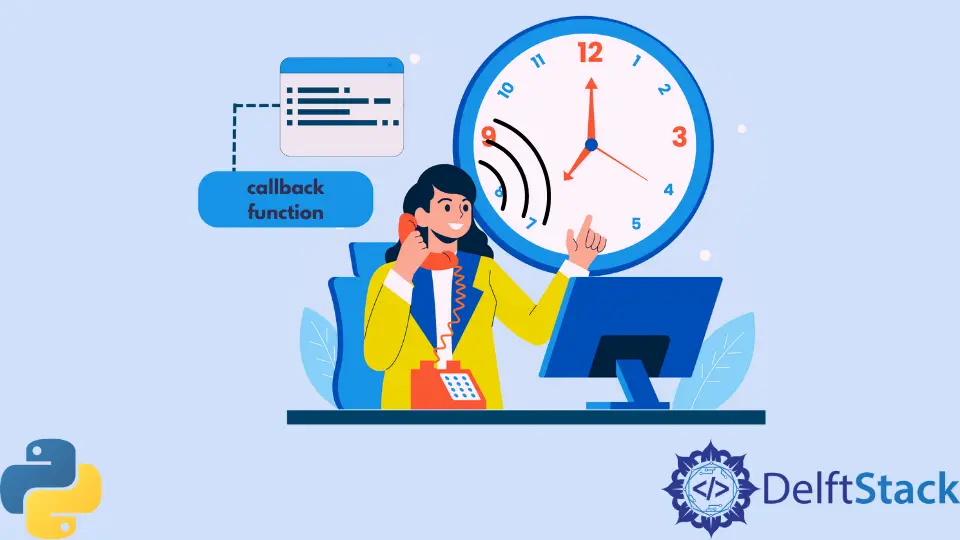The Callback Function in Python
- Understanding Callback Functions
- Using Callbacks for Asynchronous Programming
- Callback Functions in Event Handling
- Best Practices for Using Callbacks
- Conclusion
- FAQ

In the world of programming, the concept of callback functions in Python is a powerful tool that enhances code flexibility and functionality. A callback function is essentially a function that is passed as an argument to another function, allowing for dynamic execution of code.
This tutorial will dive into the intricacies of callback functions, exploring how they work, their applications, and providing clear examples to help you grasp this essential concept. Whether you are a beginner or an experienced developer, understanding callback functions will significantly improve your programming skills and enable you to write more efficient and cleaner code. Let’s embark on this journey to discover the magic of callback functions in Python.
Understanding Callback Functions
At its core, a callback function is a function that you pass as an argument to another function. The receiving function can then execute the callback at a later time. This is particularly useful in asynchronous programming, where you might want to execute a function only after a certain event has occurred, such as the completion of a task or the arrival of data.
For example, consider a scenario where you are fetching data from an API. You don’t want your program to halt while waiting for the data. Instead, you can use a callback function to handle the data once it’s available. This allows your program to remain responsive and efficient, handling other tasks while waiting for the callback to be executed.
Here’s a simple illustration of a callback function in Python:
def greet(name):
return f"Hello, {name}!"
def execute_callback(callback, name):
return callback(name)
result = execute_callback(greet, "Alice")
print(result)
Output:
Hello, Alice!
In this example, the greet function is defined to take a name and return a greeting. The execute_callback function takes another function as an argument (the callback) and a name, then calls the callback with the name provided. The result is a dynamic greeting based on the input.
Using Callbacks for Asynchronous Programming
Callbacks are particularly prevalent in asynchronous programming, where they help manage tasks that take an indeterminate amount of time to complete. Python’s asyncio library is a great example of how callbacks can be used effectively.
In asynchronous programming, you often deal with tasks that may not complete immediately, such as file I/O or network requests. By using callbacks, you can define what should happen once those tasks are complete. Here’s a basic example using asyncio:
import asyncio
async def fetch_data():
await asyncio.sleep(2)
return "Data received"
def handle_data(data):
print(data)
async def main():
data = await fetch_data()
handle_data(data)
asyncio.run(main())
Output:
Data received
In this code, the fetch_data function simulates a delay (like fetching data from a network). The main function awaits the completion of fetch_data, and once it’s done, it calls the handle_data function as a callback to process the received data. This structure keeps your program responsive and efficient.
Callback Functions in Event Handling
Another common use case for callback functions is in event handling, especially in GUI applications or web development. When a user interacts with a UI element, such as clicking a button, a callback function can be triggered to respond to that event.
For instance, in a simple GUI application using Tkinter, you might want to execute a function when a button is clicked. Here’s how you can set that up:
import tkinter as tk
def on_button_click():
print("Button was clicked!")
root = tk.Tk()
button = tk.Button(root, text="Click Me", command=on_button_click)
button.pack()
root.mainloop()
Output:
Button was clicked!
In this example, we create a simple Tkinter window with a button. The on_button_click function is defined to print a message when the button is clicked. By passing this function as the command argument to the button, we establish a callback that will be executed when the button is pressed. This is a fundamental concept in event-driven programming.
Best Practices for Using Callbacks
While callback functions are powerful, there are best practices to follow to ensure your code remains clean and maintainable. Here are some tips:
-
Keep Callbacks Simple: Your callback functions should ideally perform a single task. This keeps your code modular and easier to debug.
-
Avoid Deep Nesting: If you’re passing callbacks that themselves take callbacks, it can lead to deeply nested code, which is hard to read. Consider using named functions instead of anonymous lambdas for clarity.
-
Error Handling: Always incorporate error handling within your callbacks. If a callback fails, it should not crash your entire application. Use try-except blocks to manage exceptions gracefully.
-
Use Descriptive Names: Name your callback functions descriptively so that anyone reading your code can understand their purpose without needing extensive comments.
-
Documentation: Document your callbacks, especially if they are complex or have multiple parameters. This will help future developers (or yourself) understand the intent behind the callback.
By adhering to these best practices, you can leverage the power of callback functions while maintaining clean, understandable code.
Conclusion
Callback functions in Python are a fundamental concept that can greatly enhance the flexibility and responsiveness of your code. Whether you’re dealing with asynchronous programming or event handling, understanding how to effectively implement callbacks will improve your programming skills. By following best practices and keeping your code organized, you can make the most of this powerful feature. As you continue your programming journey, remember that mastering callback functions is a step towards writing more efficient and elegant code.
FAQ
-
What is a callback function in Python?
A callback function in Python is a function that is passed as an argument to another function, allowing it to be executed at a later time. -
How are callbacks used in asynchronous programming?
Callbacks are used in asynchronous programming to handle tasks that take time to complete, enabling the program to remain responsive while waiting for those tasks to finish. -
Can you provide an example of a callback function?
Yes, an example is a function that greets a user, which is passed to another function that executes it with a name as an argument. -
What are some best practices for using callback functions?
Best practices include keeping callbacks simple, avoiding deep nesting, implementing error handling, using descriptive names, and documenting your functions. -
Are callback functions only used in Python?
No, callback functions are a common programming concept used in various programming languages, including JavaScript, Java, and C#.
Lakshay Kapoor is a final year B.Tech Computer Science student at Amity University Noida. He is familiar with programming languages and their real-world applications (Python/R/C++). Deeply interested in the area of Data Sciences and Machine Learning.
LinkedIn